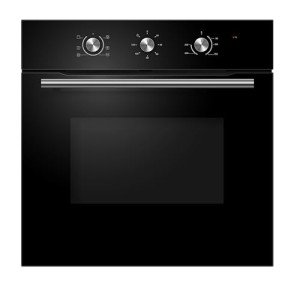Understanding In-Built Ovens: A Comprehensive Guide
In the world of modern-day kitchen design, built-in ovens have actually increased to prominence, mixing performance with looks. Their seamless integration into cabinets offers a streamlined appearance, making them increasingly preferred by house owners and culinary enthusiasts alike. This post explores the numerous functions, benefits, installation considerations, and popular types of built-in ovens, along with answering some regularly asked questions.
What is an In-Built Oven?
An inbuilt oven, often described as a built-in oven, is a kitchen home appliance created to be installed within cabinets, rather than as a freestanding system. This configuration permits a more sophisticated and orderly kitchen design while maximizing offered area. Built-in ovens can be found in numerous sizes, designs, and performances to suit various cooking needs and choices.
Advantages of In-Built Ovens
The advantages of installing an inbuilt oven extend beyond mere visual appeals. Here are some key advantages:
- Space Efficiency: Built-in ovens are developed to fit snugly within kitchen cabinetry, making them ideal for compact spaces. integrated hob and oven packages leaves counter area complimentary for meal preparations.
- Adjustable Design: Homeowners can select from a variety of styles and surfaces to match their kitchen decor, enhancing the overall look of the area.
- Enhanced Functionality: Many built-in ovens are equipped with advanced cooking innovation, offering features such as convection cooking, steam cooking, and self-cleaning functions, which enhance cooking effectiveness and flexibility.
- Ergonomic Height: Installing an oven at eye level minimizes the need to bend down, making it much easier to check food and handle meals without straining the back.
- Improved Safety: Built-in ovens can include safety functions such as cool-to-the-touch surfaces and child locks, which can be especially essential in homes with kids.
Kinds Of In-Built Ovens
Built-in ovens come in numerous types to deal with various culinary requirements. Below is a contrast of typical types:
| Type | Description | Pros | Cons |
|---|---|---|---|
| Single Oven | A conventional oven that cooks from one area | Space-efficient, easier to utilize | Minimal cooking capability |
| Double Oven | Two separate oven compartments for varied cooking | More cooking space, flexibility | Higher expense, takes up more space |
| Compact Oven | Smaller ovens ideal for small cooking areas or as a 2nd oven | Space-saving, versatile | Limited capacity |
| Steam Oven | Utilizes steam for cooking, protecting moisture | Healthier cooking choices | Normally more pricey |
| Wall Oven | Built into the wall, offered in single or double setups | Saves flooring space | Installation complexity |
Functions to Consider When Choosing an In-Built Oven
When picking an inbuilt oven, several functions should be taken into consideration:
- Size: Measure your kitchen area and kitchen cabinetry to make sure the oven fits correctly. Common widths for built-in ovens range from 24 inches to 30 inches.
- Cooking Methods: Determine the cooking techniques you prefer-- standard, convection, or steam. This decision will substantially affect your cooking style and the oven's capabilities.
- Energy Efficiency: Look for ovens with high energy efficiency ratings. These designs save money on utility costs and are much better for the environment.
- Control Options: Evaluate the control interfaces. Some designs offer wise features enabling remote cooking control and monitoring via mobile phone apps.
- Security Features: Ensure the oven features essential security functions, especially if children will be present. Lock-out mechanisms and cool outsides are valuable improvements.
Setup Considerations
Proper installation is vital for the optimum performance of a built-in oven. Here are some setup factors to consider:
- Ventilation: Ensure correct ventilation to eliminate smoke and smells. Speak with regional building codes regarding kitchen ventilation requirements.
- Electrical Requirements: Built-in ovens normally require a dedicated electrical circuit. Have a certified electrical contractor assess price and safety.
- Expert Installation: While DIY may be appealing, employing an expert installer ensures the oven is fitted firmly and safely.
FAQs About In-Built Ovens
What is the distinction in between a built-in oven and a freestanding oven?
Built-in ovens are created to be installed within kitchen cabinetry, whereas freestanding ovens can stand alone and usually integrate oven and cooktop in a single device.
Can I set up a built-in oven myself?
While DIY setup is possible, it is typically recommended to work with a professional to guarantee security and adherence to local building codes.
Are in-built ovens worth the financial investment?
Yes, built-in ovens typically offer improved aesthetic appeals, advanced performance, and effective use of area compared to traditional freestanding models.
What upkeep do built-in ovens need?
Regular cleaning, checking seals, and making sure appropriate ventilation are vital maintenance tasks. It's recommended to follow the producer's guidelines for specific care guidelines.
Just how much does a built-in oven usually cost?
Rates can vary considerably based upon features, brand name, and type, however built-in ovens generally range from ₤ 700 to ₤ 3,000 or more.
Built-in ovens provide a mix of beauty and usefulness, making them an exceptional option for both brand-new buildings and kitchen remodels. Understanding the types, functions, and setup considerations can empower property owners to make educated choices about which built-in oven best fits their needs. As cooking trends progress and kitchen design ends up being more sophisticated, inbuilt ovens will continue to play a considerable function in modern kitchen areas, combining cooking with style and functionality.

